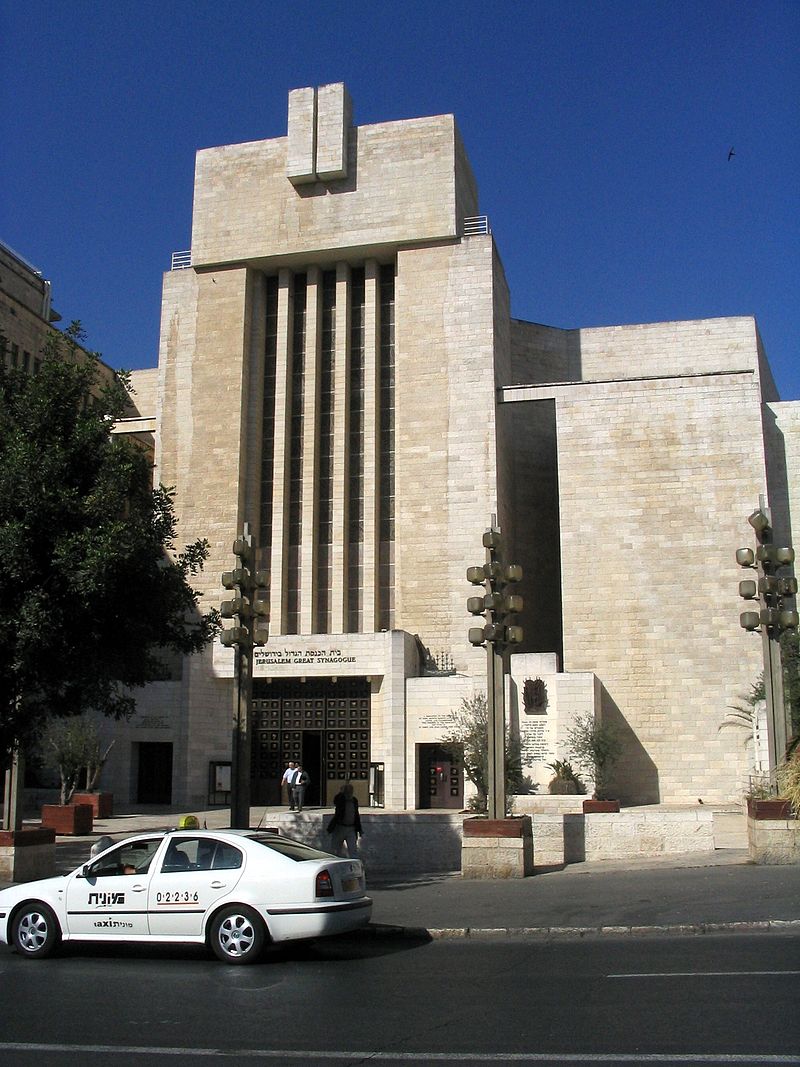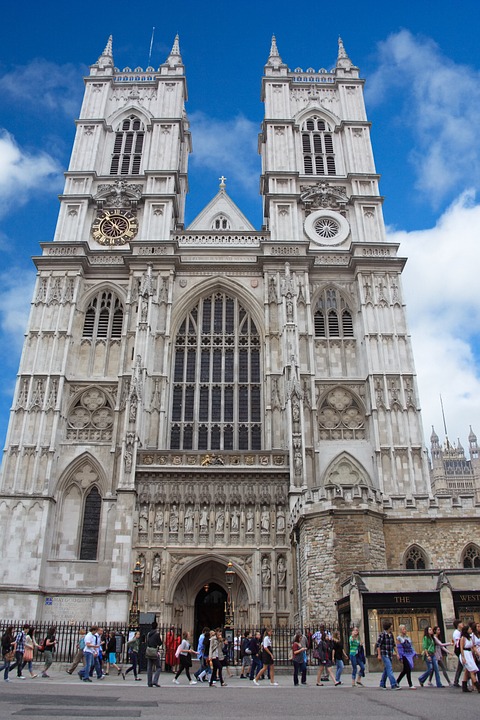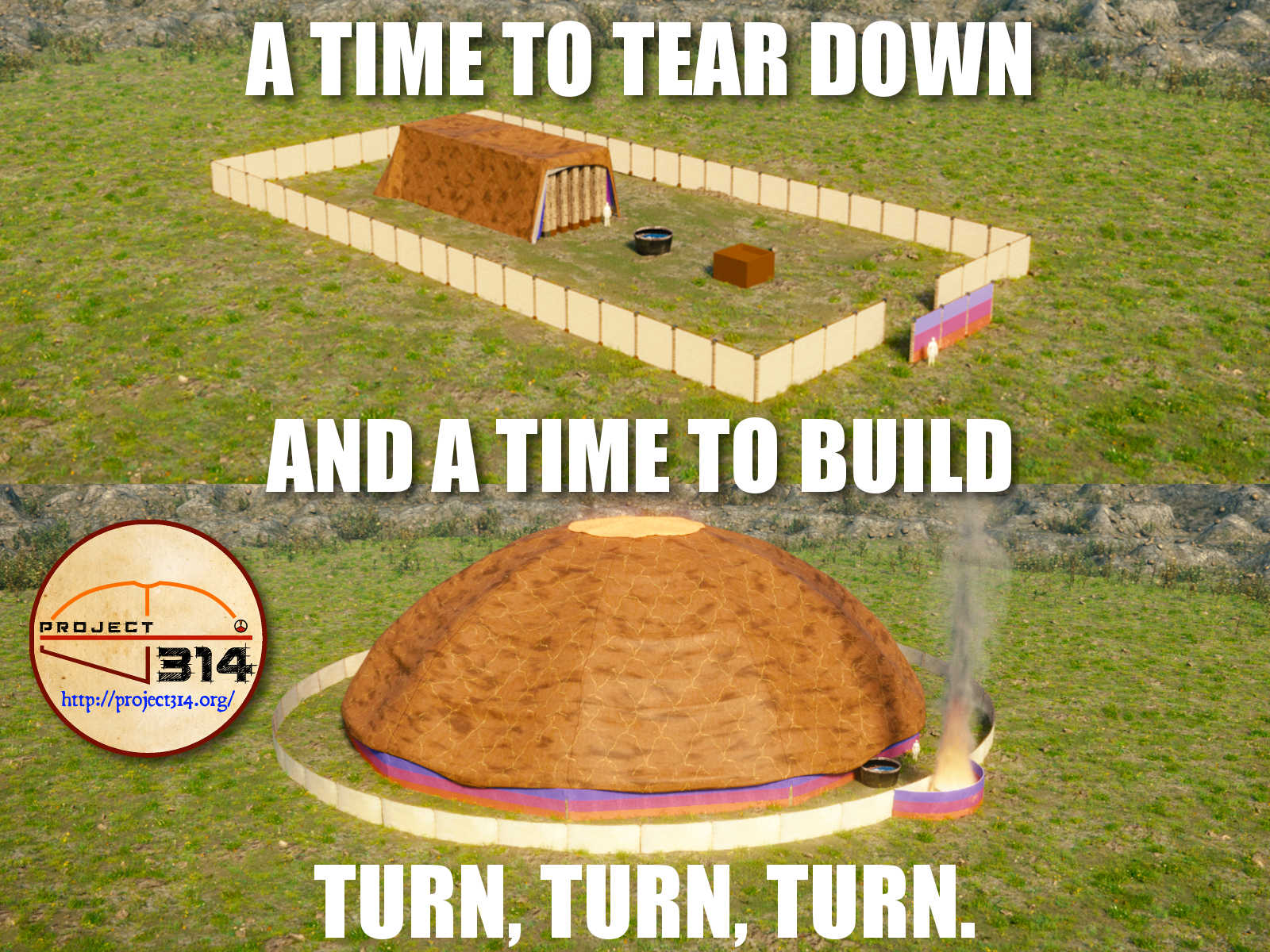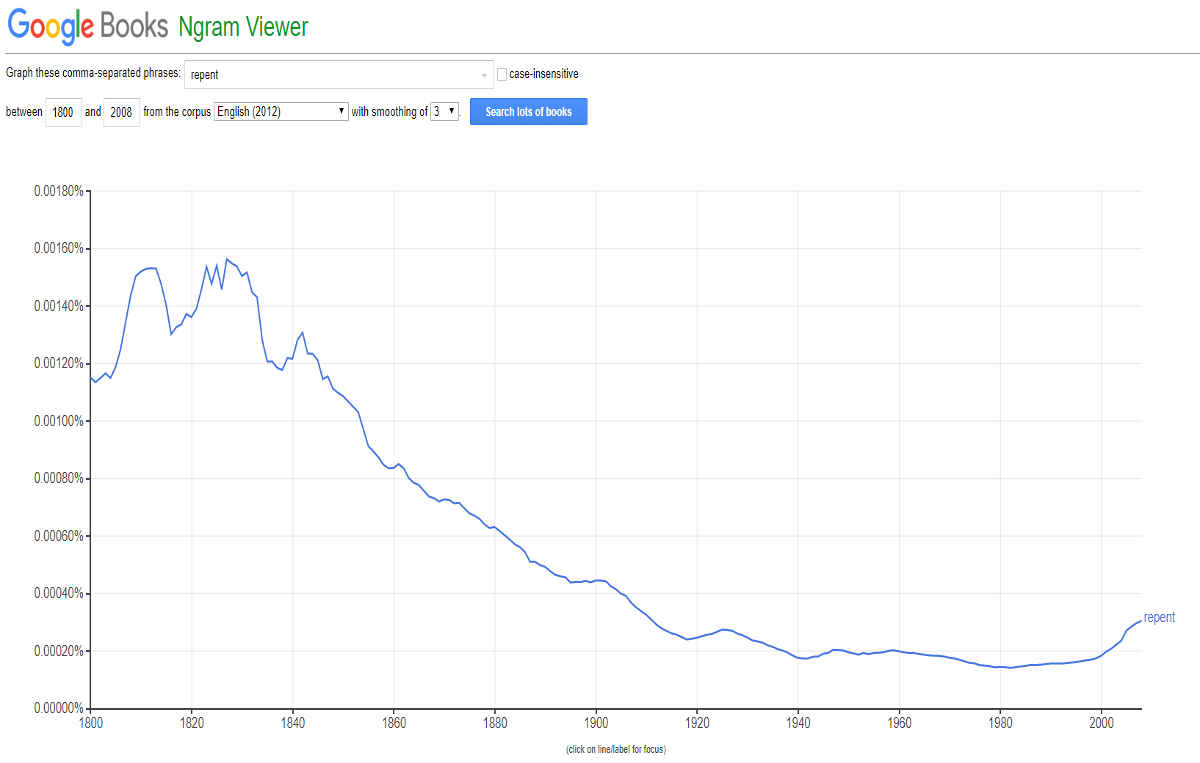It should go without saying that people of every community, color, and creed should want the world to be a better place. Starting with this underlying presumption, I believe that this is why people are so often invited to “make a difference” and why so many calls to “make a difference” are favorably received and even enthusiastically embraced. People find themselves compelled to do something in response once they are made aware of the pain and need in the world.

Make more than a difference.
Make an improvement!
Misappropriated sentiment and effort

leaves empty hands and empty hearts.
However, I also believe that people who answer the call to “make a difference” often walk away feeling unsatisfied, exploited, and perhaps even emotionally manipulated. After all, people are frequently motivated to participate in “make a difference” campaigns by means of sympathy-induced guilt, a longing for community and belonging, and perhaps even a promise of a sense of purpose or self worth. Ironically, experienced participants of “make a difference” programs call might feel a sense of futility, knowing that their efforts are unlikely to result in permanent or lasting changes, especially once they are made aware that the sea of need is infinite, whereas their means and contributions are finite in comparison. Thus, many “make a difference” outings and efforts might often be likened unto “Novocain for the soul”. In other words, they might temporarily numb some pain and even fill a void as they preoccupy people with busy work, but in the end, realizing that the mound of social ills is virtually insurmountable, people are likely to walk away feeling empty-hearted as well as empty-handed.
For such reasons, and contrary to popular slogans, I believe that people want to do more than “make a difference”. After all, "a difference" is inherently vague and morally ambiguous when presented without stated goals or ends that quantify or qualify the "difference". Thus, rather than committing time, money, and effort into making a mere "difference", people should instead endeavor to make an improvement! For those aspiring to merely make a difference, there a proverb that says that “zeal without knowledge is not good”. Needless to say, change for the sake of change is not necessarily virtuous. In fact, change can actually be pointless and even counterproductive—and the same can even be said of efforts to make improvements without having understanding or proper direction. So before undertaking any endeavor in life—especially something as radical, controversial, and extreme as revolution—people should first acquire knowledge and seek instruction to ensure their precious time and effort is not spent in vain.

Nearly 3,500 years ago, Moses was called to lead a revolution in Egypt. Being unique in comparison to most other revolutions throughout history, the Egyptian Exodus was not defined by public protest or civil unrest; neither was it executed by angry peasants rising up with torches and pitchforks. Instead, the Exodus event came about by means of divine intervention and deliverance through supernatural plagues. However, the Exodus revolution did begin with what has perhaps become the most popular revolutionary phrase ever coined, as Moses was told to tell Pharaoh to “let my people go”.
Seldom is it ever considered, however, that “let my people go” was not the totality of the divinely inspired and revolutionary message. In addition to freedom from bondage, there were special reasons behind the ancient revolution of Exodus. More specifically, and in conjunction with the “let my people go” mandate, the intended reason for Israel’s liberation was identified by a divine clause, “so that they may hold a festival to me in the wilderness” (Exodus 5:1). Thus, the ten plagues that would follow might be literally understood as “God’s fight for their right to party”. The plagues of the Egyptian Exodus would be God’s way of making a difference—as well as an improvement—in the lives of his enslaved people, who were in need of some serious rest and relaxation after eighty years of harsh Egyptian rule.
Culminating at the Red Sea, the deliverance from bondage is usually considered to be the theme—hence also the apex—of Israel’s Egyptian Exodus story. Although most people today have never been beneath the rod of cruel slave
masters or whipped while performing excruciating manual labor, the very notion of obligatory slavery is nevertheless bound to paint a vivid picture in readers' minds. After all, most people can identify with the idea
of being forced to do something against their will, with some form of emotional abuse, or with some sort of physical pain—especially as it is juxtaposed with a story of freedom and new beginnings. Regardless, the true
climax of the Exodus narrative was not realized on the morning of the Passover; instead, it was the theophany or the manifestation of God speaking to and entering into covenant with Israel at Mount Sinai, or perhaps
the descent of God's presence into the midst of the camp as described at the conclusion of the book of Exodus.
Furthermore, rather than celebrating their independence with bright and loud fireworks on the
day of their independence, the Israelites would need to wait until they traveled to Mount Sinai to witness the bright light and cloud hosting an increase of God’s presence, otherwise referred to as the “Shekina glory”.
However, it is also important to consider that the Shekina glory did not arrive in its fullness until they built for him the Tent of Meeting, also known as the “Tabernacle”, which might be translated as the “dwelling
place” from the correlating Hebrew “miShkan” term.
As for the Tabernacle, it should also be noted that the idea of the “Mishkan” was not one of human origin, and neither were the plans for physically constructing the unusual tent. To the contrary, Moses received plans for God’s dwelling place along with basic laws used to govern the community after Israel received the Ten Commandments. Obviously, the introduction of these laws at Mount Sinai would do more than “make a difference”; they would revolutionize the way that the Israelites lived. Thus, by means of righteous laws and God’s dwelling in the midst of the camp in the Tabernacle, Israel’s camp—and eventually the whole world—would become a better place.
Needless to say, with God's residence placed in their midst, the Israelites way of life would be changed radically from what they had known; and it might rightfully be described as a great social—as well as religious—revolution.
Logically, if Moses received commandments of how God was to be worshiped by Israel, it stands to reason that the Israelites would be undergoing a massive religious reform immediately after they were liberated. In other
words, the religion that they would practice at Mount Sinai and beyond—as part of an everlasting covenant—would be nothing like the pantheistic and pagan system they had come to know in Egypt. Likewise, it was a religious
and social system that is completely unlike anything that we have today, as God’s government of theocracy was not based upon moral relativism defined by a democratically elected legislature—neither was it a system where
church and state coexisted independently of one another. To the contrary, this was God’s kingdom; and at the midst of it was the Tabernacle or dwelling place of God, where his people came to draw near to his presence.
Despite Israel’s covenant with God and their deliverance from Egyptian bondage, the nation of Israel would backslide and repeatedly violate God’s law, which God himself had described as “everlasting”. As such, nearly four
centuries later, the Israelites once again found themselves oppressed by their enemies, and rather than being obedient to the terms of the covenant and looking to God for their deliverance, the people told the Prophet
Samuel that they wanted a king instead of God’s system of government, which was comprised of priests (who were sons of Aaron, the brother of Moses), Levites (who were appointed on behalf of Israelite firstborns after
the people said to Moses, “do not have God speak to us again or we will die”), and regional tribal judges.
As Israel aspired to replace God and his system of government, the people also came to disregard and replace the dwelling place that God himself had established for worship. After King David came to power and amassed large quantities of wealth by plundering or taxing neighboring nations, David built a palace where he came to lament the fact that the Ark of the Covenant was merely sitting in a tent. From a position of wealth and affluence, David expressed his interest in building a new temple of cedar and stone to replace the tent; however God responded in a way that was completely contrary to David’s expectations. Through the prophet Nathan, God replied to David, saying, “Shalt thou build me an house for me to dwell in? Whereas I have not dwelt in any house since the time that I brought up the children of Israel out of Egypt, even to this day, but have walked in a tent and in a tabernacle. In all the places wherein I have walked with all the children of Israel spake I a word with any of the tribes of Israel, whom I commanded to feed my people Israel, saying, why build ye not me an house of cedar?” 2 Samuel 7:5-7 (KJV)
Despite the Tabernacle serving as God’s house in the land of Israel for four centuries following the Exodus wanderings, David did not fully receive Nathan’s prophetic words and proceeded with his plans to replace God’s
tent with a temple that he deemed to be greater. With the massive amount of gold and silver that David had acquired through regional military conquest, David commissioned his son Solomon to build the house that he wanted
to have built.
As Solomon commissioned the Temple, he also decommissioned the Tabernacle, in effect severing it from Israel’s national heritage, and perhaps nearly wiping it from Israel’s memory or consciousness
as well. Although the glory of God did fall upon Solomon’s magnificent stone and cedar edifice after the Temple building was dedicated, it is quite reasonable to deduce that Solomon’s luxurious building (costing in
excess of 2000 times more than what was required for the Tabernacle) is best understood to be God’s permissive will—as opposed to his preferred will. After all, the Temple was not God’s idea—it was David’s idea—and
God clearly made that point known through the prophet Nathan. But Nathan’s revelation to David did little to dissuade either king from having their dreams realized.
Ironic as it may sound, the “permanent” stone and cedar Temple that Solomon built (believed to have fallen to the Babylonians in 586 B.C.) did not remain in service as long as the “temporary” Tent of Meeting, which endured 480 years. The same can be said of the second Temple, which was constructed per the Persian king Cyrus’s mandate, specifications, and funding as he returned the nation of Judah from exile. After falling to the Romans in 70 A.D., the two splintered nations of Judah (the southern kingdom) and Israel (the northern kingdom) have largely remained in exile, and have consequentially lacked the strength, unity, and/or sense of priority to restore God’s house. To this day, a portion of the nation of Judah has returned to Israel and Jerusalem, but it would seem that the number of hours dedicated to publicly lamenting the Temple’s destruction and its absence far outweighs the amount of effort dedicated towards construction and restoration of God’s dwelling place.
Since the time of the Roman oppression and the advent of Christianity, and given nearly eight centuries of Jerusalem Temple precedence, the original Tabernacle or dwelling place seems to be all but forgotten, despite
its unique and divinely inspired origin. The Tent of Meeting is largely seen by the religious public at large as something inferior to later Temples, and such, as being something that is no longer relevant to
religious communities today. For all practical purposes, Tabernacle commandments have even been excluded from Maimonides' list of 613 commandments. Given low priority within theological circles,
Tabernacle construction commandments are remotely appreciated and only sometimes pondered in hopes of finding esoteric truths, while religious communities fill their cities and neighborhoods with churches and
synagogues instead. According to many religious leaders, the only credible dwelling place for God to dwell is within the individual; hence the churches and synagogues are designed to accommodate people instead
of being designed and to accommodate
El Shaddai according to the divinely inspired pattern, which was unique throughout all of
human and Bible history.
But what if the theologians are just as mistaken about the implications of a physical residence and the nature of the divine pattern as they are about the shape of God’s dwelling place? Could something as
seemingly trite as an ancient tent blueprint or building pattern really “make a difference”? Could the restoration of God’s dwelling place on earth bring about a revolution, and make the world a better place?

The Great Synagogue - Jerusalem, Israel

Westminster Abbey - London, England

When someone says "revolution", what thing first comes to mind?
In modern English, "revolution" is most often associated with government or political science. Usually having a pretty good finger on the pulse of public perception, Wikipedia defines a revolution as “a
fundamental and relatively sudden change in political power and political organization which occurs when the population revolts against the government, typically due to perceived oppression (political, social,
economic).”
Clearly, revolution is not a French or an American idea; it was not originally conceived in 1776. While the terms revolt and revolution have taken on contentious and/or violent political connotations in French and Italian theatres, the words revolution and revolt ultimately share the same Latin root, as does the English word revolve. Thus, in the simplest sense, the Latin root revolvere simply a verb that means to revolve, to roll back, or to return, or perhaps even to turn [the eyes] back. Thus, true revolution need not be associated with the overthrow of government or be predicated upon acts of violence; and neither need it be preceded by acts of government oppression. To be impactful, however, it must involve a notable portion of a population; likewise, revolution is contingent on a population’s desire to revolve or turn back. But "turn back" how... and to what?

Back in the mid 60’s, the Byrds made a billboard hit out of a mere eight verses attributed to Solomon. But the Ecclesiastes excerpt was not sung verbatim; instead, the musicians added the phrase “turn, turn, turn”
twice to each refrain, perhaps referring to the cyclical nature and seasonal aspects of human life.
As “turn, turn, turn” was echoed by gentle voices singing in harmony with a mellow guitar chord accompaniment, it is interesting to consider the theological implications of the lyric addenda. After all,
the English word “turn” could also be considered to be synonymous with the Hebrew word תשובה or “tishuva”, which is typically translated into English as “repentance”. This is particularly ironic, as few people
are favorably inclined to hear someone signing, “repent, repent, repent” to them. Usually, when they hear the word “repent”, they think in terms of an angry fire-and-brimstone preacher thumping a bible, or an
eccentric guy standing on a street corner with a loud bullhorn in one hand, Bible tracts in the other, and perhaps sandwiched in between signs with apocalyptic warnings. Needless to say, if the Byrds would have
used “repent, repent, repent” in their lyrics back in the 60’s, it’s highly unlikely that they would have had a smash hit. Let’s face it—even Billy Graham’s altar calls didn’t use such unsettling, emphatic,
and challenging language.
However unfamiliar, this Hebrew or Jewish idea of Teshuva is actually found in New Testament texts in conjunction with what most Christians refer to as “the gospel”
or “good news” (Mark 1:15). The problem, however, is that our culture has little concept of what “repentance” or Teshuva is apart from an assumed New Testament connotation.
To everything
(turn, turn, turn)
There is a season
(turn, turn, turn)
And a time to
every purpose,
under heaven.
- The Byrds, 1965
(lyrics originally from Pete Seeger)

Per the below chart displaying statistics as compiled by the Google books tool (see
https://books.google.com/ngramsfor reference)
the usage of the
English word "repent" has diminished significantly in recent centuries.

Moreover, if usage in modern literature is any indication of public understanding of what it means to
repent, it would seem that the word
repent is making a minor and slow rebound after riding an all-time
low for decades:
As for the popular English notion of
repent, it is often equated to ideas of remorse and regret. According to dictionary.com,
repent is “to feel sorry, self-reproachful, or contrite for past
conduct; regret or be conscience-stricken about a past action, attitude, etc.” Conveying a much more religious connotation, Webster’s 1828 repent definition is, “to turn from sin and dedicate oneself to the
amendment of one's life”. However, truth be told, both of these ideas are lacking relative to the idea conveyed in the ancient language.
As the Greek term metanoeō, (Strong’s G3340, translated as “repent” in Mark 1:15) is not limited to regret and lament, it also conveys the idea of “changing one’s mind for the better” and “making amends”.
Thus, this inherently introspective term begs a simple question as to what “for the better” is, and by what standard one might “make amends”. In other words, the Greek term demands a moral reference point or
point of origin. In places where the Greek metanoeō term is also used in the Septuagint, the correlating Hebrew root is shuv (Strong’s H7725, שוב). Understanding the command to “repent” then, given these correlations,
is to not just “turn away” from evil, or to “regret” doing evil, but to turn from evil and return back to that which God deems to be righteous and lawful obedience. Thus, the New Testament
repent usage
should be understood in the exact same way as used by the Old Testament prophets.
It seems that it should go without saying that God’s righteous standard is fully articulated in Moses’ Law. This simple principle is not only a central theme within Judaism, but it is echoed within later Christian
texts as well (e.g., Romans 7:7). But unfortunately, given the time and the culture in which we live, the validity of the Mosaic standard is under attack—and diminishing as a result of public ignorance and neglect.
Instead, strains and sentiments of atheism are have been permeating and redefining western cultures in recent decades; thus systems of moral relativism and secular humanism are quickly becoming the new norm.
Perhaps more significantly, this lawless thinking has become prevalent within religious communities, however loving such communities may seem, and however subtle the antinomian spirit and inclinations may be.
Following decades of such rampant breakdown, leaders and members of so-called religious communities need to be reminded of a single and simple truth. To put it as simply as possible,
Moses’ Law still defines proper moral behavior and God’s expectations for his people.
Unfortunately, there are many religious spokesmen that do not accept that Moses was and still is intended to be our “schoolmaster”. Instead, many teach the masses that “the law has been done away with”. Consequently,
New Testament mandates to “repent” that have been taught according to this antinomian standard have lost their true context and in effect have become meaningless, thus leaving the masses without an absolute
moral standard and obvious point of origin.
Some say that ignorance is bliss, but the honest truth is that “people are destroyed for lack of knowledge”. Although this Bible sound bite has become quite popular in recent years, it is ironic that it’s
almost always quoted in ignorance. How so? The remaining three fourths of the verse is almost always excluded. The prophet Hosea, after all, coupled the idea of the deliberate rejection of knowledge with forgetting
that which was once known. In this regard, Hosea’s quote only applies to a portion of people living today, because the unfortunate reality is that
you can’t reject or forget that which you’ve never learned.
My people are destroyed for lack of knowledge: because thou hast rejected knowledge, I will also reject thee, that thou shalt be no priest to me: seeing thou hast forgotten the law of thy God, I will also
forget thy children.
– Hosea 4:6
Over the course of the past decade, small factions of “Religious Right” patriots have been zealously opposing the ongoing and intensifying atheist efforts to dismantle Judeo-Christian monuments and eradicate such
national heritage from all public properties, including parks, universities, courthouses, and other government buildings. In particular, Christian crosses and Jewish iconography (e.g., menorahs or the six-pointed
star) have come under attack, as have engraved Scriptures and Ten Commandments monuments.
While the religious merit and First Amendment basis of these intense and costly legal battles might be subject to debate, it seems apparent that these cases are not only a barometer by which to measure religious
conviction of our communities or nation as a whole, but more so a measurement of religious irony. In particular, Moses’ law, from which the Ten Commandments are extracted, instructs individuals to write God’s
laws on their gates (Deuteronomy 6:9) of their individual houses. There is, of course, great practicality in—and historical and Biblical precedent for—posting legal requirements at a property threshold or entrance
point of a given jurisdiction; however, there is no such provision for public property. Thus, it is incumbent upon those professing a Judeo-Christian heritage to question the priorities with respect to the locations
of the various Mosaic inscriptions, and apply these priorities accordingly. In other words, if Moses’ writings are not first found on residential furnishings, doors, or structural elements, should they be expected
to be posted throughout buildings owned by religious institutions? And perhaps of equal importance, if they cannot be found on the exterior of properties owned by religious institutions, why should they be expected
to be present on public grounds or memorialized on or around government edifices? Surely, both irony and hypocrisy alike is found in the disproportionate focus.
Congress shall make no law respecting an establishment of religion, or prohibiting the free exercise thereof; or abridging the freedom of speech, or of the press.
.–The First
Amendment to the
Constitution,
1791
And these words, which I command thee this day, shall be in thine heart: And thou shalt teach them diligently unto thy children, and shalt talk of them when thou sittest in thine house, and when thou walkest by the way, and when thou liest down, and when thou risest up… And thou shalt write them upon the posts of thy house, and on thy gates.
– Duet 6:6-7,9
While there may be a handful of exceptions to the rule, casual surveys reveal that few church driveways or building entrances are decorated with any Mosaic memorabilia. In fact, in inverse proportion, churches are
known for self-identifying by means of a cross in the architecture of the structures (use of such symbolism for identification or decoration has no basis within Christian Scriptures). Granted, it is possible
to say that this claim is subjective and therefore cannot be substantiated, but basic search engines tend to yield the same results. By initiating an internet image search for “
Ten Commandments monuments”,
the vast majority of the results are indeed photographs taken in front of community courthouses as opposed to community churches.
Likewise, when coupling the word
“Ten Commandments” and “church” and coupling “Ten Commandments” to “courthouse”,
it seems that Ten Commandments monuments are more likely to be associated with public properties as opposed to
church grounds.
Digressing,
it seems that the search engine algorithms make a simple point rather eloquently: There has been greater public support for Moses law than there is by religious institutions. Does this indicate that people within
churches are indifferent to Moses’ law, or that the general public has been more interested in the rule of law than the church? Or that religious people would rather see law imposed outside of its gates than
inside its gates? Regardless of what the data indicates, this growing trend toward Mosaic ignorance and hostility is not only antithetical to New Testament teachings and writings, but is indicative that it’s
time for revolution—and that it’s about time that we take action in order to "make a difference".
Do you seek for God day after day?
Do you eagerly want to know God’s ways?
Do you keep the commandments of God?
Do you seek God’s justice?
Do you want God to come near to you?
Many religious people might be quick to answer these questions in the affirmative; but before answering these questions, consider Isaiah’s uncomplimentary criticism of people who were practicing a false
religion, along with Hosea’s warnings of rejection for those rejecting knowledge and forsaking the law.
Shout it aloud, do not hold back. Raise your voice like a trumpet. Declare to my people their rebellion and to the house of Jacob their sins. For day after day they seek me out; they seem eager to know my
ways, as if they were a nation that does what is right and has not forsaken the commands of its God. They ask me for just decisions and seem eager for God to come near them.
– Isaiah 58:1-2 (NIV)
In the absence of the Shekina glory, many religious establishments might try to create a counterfeit worship climate such that their audience might be stimulated and even mesmerized by means of sound, smoke, and
strobes. Many lull people into a trance by means of soothing and tender melodies matched to heartfelt lyrics encapsulated in monotonous refrains. But at the end of the service, when the feel-good part of the
show concludes, the unfortunate reality is that people come down from their emotional high, only to depart feeling empty–not knowing any more about right and wrong than when they first arrived. They return to
their neighborhoods and communities which are in states of gross moral decline, and return back to vocations operating under ethically questionable models, and with questionable moral ends. Surely, if religious
observance is primarily defined by praise, worship, and evangelistic crusades—yet fails to "make a difference" and improve your community by advancing justice and mercy within it—it just might be very same fake
religion that Isaiah prophesied about.
As indicated by the Tabernacle project charter and mission statements, Project 314 and Project Betzalel were initiated with the primary intent of furthering public awareness and understanding of God’s dwelling place by means of media and construction projects. However, it should be noted that the projects are also considered to be a subset or part of a larger “great commission kingdom restoration mission”, which includes leading people to repentance in all areas of life. For clarification, these specialized Tabernacle teaching and restoration projects were not launched with the intent of starting a new religion—even though it is likely that religious reformation and revolution being inevitable byproducts and ancillary benefits of these efforts. After all, these projects are completely unique in that they restore the lost plans to God’s dwelling place, which have been obscured by religious tradition and translation for thousands of years.
While it is hard to believe that western religions will be able to function as they have for scores of generations given this unique revelation, it is important to these projects are regarded to be a coordinated or
contrived usurpation. Instead, they should be seen as an open invitation for anyone with open eyes, an open heart, and an open mind to participate in something that’s virtually obligated to bring about revolution
on a truly unprecedented scale. After all, the Tabernacle isn’t entirely an end in itself—but it is poised to spark a spiritual awakening or revival at unprecedented levels.
While restoring the pattern of God’s
dwelling place is alone of great importance, the underlying truths and principles upon which this Tabernacle rediscovery is predicated are believed to be of perhaps even greater significance. To be more specific, rediscovery
of the Tabernacle pattern ultimately reveals the level of corruption within Bible translations and religious traditions—issuing a challenge to reconsider the religious status quo. The depth, breadth, and toxic nature
of these doctrinal “lost in translation” and “obscured by tradition” problems cannot be understated; and the Hebrew-based Tabernacle exegesis bears irrefutable witness to such corruption, as alluded to in Ezekiel’s
strange “show the house that they may be ashamed” message. Surely, even if the Tabernacle was rebuilt but never restored to service, it stands to reason that the physical restoration of the house alone would bring people
to repentance, causing people to return to the truth and the depth of the original Hebrew Scriptures. The Tabernacle would not only elevate man’s reverence for God’s word, but it would even shake religious scholars
and experts to the very core of their being. After all, it should be nothing short of disconcerting if other core doctrines, e.g., those about atonement, salvation, and eternal life, were mistranslated to the same extent
as God’s dwelling place has been, should it not? Those who see the Tabernacle clearly should be quick to see it as a sign and warning to the world, exposing the layers and levels of heresy that the world has come to
accept and even embrace.
Although these Tabernacle projects are by no means chartered to comprehensively critique or correct the balance of the world’s religious systems, religious celebrities, or longstanding institutional religious doctrines, it is inevitable that they will bear witness to the folly of reams of English Bibles, complementary commentaries, and traditional doctrines which often aren’t worth the paper that they are printed on. Given the increasing levels of confusion, corruption, and conflict, it seems that religion as we know it needs to be "rebooted" at the very least, and it stands to reason that the restoration of the dwelling place is an instrumental part of the reset. After all, religion that cannot truly "make a difference" and show ongoing improvements is by definition "fake religion" and needs to be recognized as impotent, self-serving, and parasitic; and should be abandoned in the event that it cannot be reformed.
People often say that "life's a journey, not a destination". In saying this, I think that most people intend to mean that life is inevitably lived in various states of transition, and as such, is meant to be
fully appreciated along the way—lest the present moment always be diminished by discontentment or squandered as it is spent in a perpetual state of anticipation.
While there is merit to likening life
to a journey, I would make a point to challenge this "life's a journey" maxim given that life more resembles a tour. After all, thinking of life as a journey might suggest that the ultimate endpoint is fully known
or can be predetermined at the point of departure. Although many materially-minded people might perceive life as little more than a cradle-to-grave experience, the tour analogy is more fitting in that tours
inherently imply multiple stops and multiple visits, many of which recur with every season or with every revolution of the sun.
An even more important distinction between a journey and a tour is rooted in both
direction and purpose. Tours are generally characterized by a series of appointments and agendas along the way, which are inherently planned and personal. Thus, it is the appointment that gives the tour
both direction and meaning, whereas a journey is more likely to be defined by travel and measured in terms of distance from the end destination.
Journey
Finally, tours are distinctly different from journeys in that tours tend to be guided as opposed to autonomously directed. People who have been on guided tours know from experience that great tour guides can make all of the difference.
Tour
The reason that guides make all the difference in a successful "tour" is that they typically assume responsibility for many trip details. For example, they book appointments for events that are weeks, months, or even
years in advance. They introduce you to important people and great experiences that you would otherwise never meet or have. They will tell you where you are going or where you need to go in accordance with
your preferences, and often times they'll even carry your luggage for you.
People who recount the Exodus story sometimes describe how the Israelites were left to "wander" in the wilderness—as if to say they were
abandoned, blindfolded, or devoid of any sense of direction. While it is true that the majority of the former slaves were not allowed to enter into the promised land for a period of forty years after the "Egyptian
revolution", it is important to remember that they were not really "wandering" aimlessly, or inept in their navigation skills. To the contrary,
these Israelites were on tour! With
El Shaddai as
their full time tour guide, they knew exactly where they were to make camp; and when God's presence lifted, they would know exactly when they were supposed to break camp as the Tabernacle or dwelling place was
removed from their midst.
Understanding that life is not a journey, but rather a divinely orchestrated tour, it leaves the ancient Exodus account—as well as our lives today—making much more sense. After all, the English word "tour" seems
to perfectly correlate with the Hebrew word ת-ו-ר, which is spelled with three letters making the exact same sounds as our English T-U-R! Moreover, the Hebrew tour is not one of random or aimless meandering,
but rather one that is ultimately guided—not only with cause and with purpose, but also with God's governing statutes and precepts, which are referred to as the "Torah".
Are you hoping to "make
a difference" unlike ever before? Are you seeking purpose in life, and interested in joining a tour that is revolutionary, but still perplexed about why or how Tabernacle restoration is important? Consider
the top ten reasons as summarized below.
H8446
תּוּר
tûr
toor
A primitive root; to meander (causatively guide) about
Even though a large group people might be riding the same bus at the same time, it goes without saying that at any given moment each person may be on the bus for different reasons. As individuals we are at different
points of life's "tour"; we have different paths, different destinations, different appointments, different needs, different purposes—be they emotional, intellectual, social, fiscal, spiritual, vocational, motivational.
Such
is the case with the Tabernacle restoration projects. As is the case with the "frequently asked questions", people come from many different backgrounds and perspectives; and in the same way, there is generally
no "best" or "one-size-fits-all" reason to present to people who might inquire as to why these projects are important or why they should participate or invest in them. As such, ten of the more practical
and straightforward reasons for joining this Tabernacle tour are presented below:
If our love for God is expressed and measured by our obedience to him and following his commandments, it stands to reason that the commandments related to building of his house are of paramount importance. Contrary to what may be public opinion, the commandments to build God's dwelling place have never been replaced, rescinded, or superseded. So why build God's house? Because he said so. Obedience is rooted in respect, and respect is another expression of love.
For centuries, rectangular depictions of God's house have conveyed the idea that God is either an incompetent builder (specifying a substandard structure) or as an inept communicator (giving bad instructions).
Regardless
of good intentions held by theologians of yesteryear or even yesterday, God's reputation as the master of all creation is at stake as the design of God's house is depicted. His reputation is seriously put into
question when presenting the traditional rectangular Tabernacle model, and his reputation is restored and elevated as his dwelling place is depicted as something that is majestic, highly engineered, and as the mark
of intelligence.
Is your God an intelligent designer? According to tradition, the God of the Bible is not an intelligent designer. Only an intelligent designer is worthy of
respect, and this is why his house and his image are inextricably linked. Tradition has undermined God's reputation, and that reputation needs to be restored.
Just as God's commandments inscribed on two tablets of stone were introduced as a lasting covenant and witness, the same thing can be said regarding the intention behind building God's dwelling place. After all, a six story tent is bound to leave a lasting impression in peoples' minds, and if left standing three thousand years ago at the time of Solomon, people would have been more inclined to remember their roots, including the history of their ancestors as well as the miraculous Exodus deliverance that happened by the hand of the God of Israel. Written words in a closed book are easily forgotten; and likewise, two dimensional pictures that are worth a thousand words can similarly be concealed and ignored. However, there is no easy way to hide or forget a six story monument of sorts. While idolatry is repeatedly and explicitly forbidden in Bible texts, it should go without saying that a physical object that occupies three dimensional space is bound to be a mnemonic tool like none other. An enormous tent standing upon ten pillars would testify to the reality of God's ten words more than any other inanimate object possibly could.
As the rediscovery of the God's ancient dwelling place becomes more widely known, it stands to reason that people both inside and outside of the religious community may be amazed at the ancient 314 revelation and the body
of knowledge contained in the ancient Hebrew scriptures. Consequentially, people who have been ostracized, offended, mislead, or abused by illegitimate religious establishments may have a newfound curiosity,
and perhaps may be left inclined to explore their religious heritage and reconsider their relationship with God. Conversely, people within religious establishments might similarly be given an opportunity
to be challenged, and to reflect upon their confidence in their religious convictions, doctrines, and affiliations. Finally, as this "intelligent design" is made known, it stands to reason that
people will become inspired by that which has been rediscovered in God's word. As people begin to see what is really revealed in the depths of the holy Scriptures, people will be similarly inspired to explore
God's word—perhaps unlike ever before.
Projects that involve multiple people working toward a common goal inevitably unite people, and such unity is the basis of community. Obviously, in the days of ancient Israel, the Tabernacle was not only the center hub of the camp, but it was also a project that would have likely involved tens of thousands of people. Originally, the Tabernacle would have united all walks of life, including carpenters, lumberjack types, miners, metallurgists, smelters, smiths, hunters or herdsmen, shearers, spinners, butchers, tanners, leather workers, harvesters, weavers, foremen, engineers, landscapers, secretaries, and other helpers serving in a variety of miscellaneous capacities. Granted, there was probably nobody in the camp assigned to web development, sound systems, or camera equipment, but it goes without saying that every generation has its own unique set of challenges to overcome. Though common objectives, we find personal identity, purpose, and family that we never knew we had.
In recent years, there has been an unprecedented interest in observance of the ancient Biblical Holy Days, which is is the true origin of our English "holiday" term. Hebrew "holy days", otherwise known as "appointed times" in English, or as "Moedim" in Hebrew is related to the ancient divine dwelling place from an etymological standpoint, as the Tabernacle was more frequently referred to as the "Tent of Meeting". While it is true that people of ancient times met with God at the Tabernacle, it is also true that the meeting times were in a sense by appointment, and the appointment was in fact defined by the "holy day" schedule. Thus, the tent was used to establish meeting place, which implicitly required a meeting time. Finally, being a round and visually large landmark of sorts, the tent was not only a gathering place, but it stands to reason that it was likely used as a timepiece as well, whereby the priests would use the structure as a sort of "clock" or "calendar" to track the heavenly bodies so that they could keep their appointed meeting times with the God of Israel.
Needless to say, there is no teacher like personal experience. In engaging in Tabernacle restoration projects, people can develop skills through hands-on experience. Obviously, a diverse collection of skills was originally required to construct God's dwelling place; and no doubt, the former Egyptian slaves would have probably been very skilled and experiences in a wide variety of trades and vocations. Of course, the uniqueness of God's dwelling place would have entailed its own set of challenges that would have probably stretched the people in many ways (probably more so than making bricks without straw), especially as they would have needed to be extra industrious as they were working in wilderness conditions that were quite possibly short of ideal, and perhaps inferior to what they were accustomed to in Egypt.
It is true that "to obey is better than sacrifice". However, this is not to say that to sacrifice is by any means wrong or evil. To the contrary, sacrifice is Biblically portrayed as being indicative of love
and devotion—as well as commanded. Lest it be forgotten, the context of Saul and Samuel was unique in that Saul was not offering gifts that he had been commanded to offer; instead, he was assuming a priestly role
and usurping Samuel in the offering that he was making. The greater truth is that Abel, Noah, Job, Abraham, Issac, and Jacob—all great patriarchs of the faith were commended for their sacrifices.
As
for sacrifice, tithing of something as seemingly minuscule as spices is even condoned in New Testament time, provided that offering such gifts is not to be construed as a substitute for justice, mercy and faithfulness.
As for Tabernacle construction in ancient times, Israelites made God's dwelling place from a combination of freewill offerings (Exodus 25), as well as a small "Tabernacle tax", which amounted to a half-shekel of silver
(worth about $6 US in 2019) per person. However, independent of their small silver contribution, the Israelites were commanded to support the Levite Tabernacle workers (Numbers 18:21) by means of agricultural
ties (Numbers 18:27-30). Lest it be forgotten, the Levites were not allotted land in Israel, and were appointed to serve in the stead of the other firstborn Israelites that essentially renounced their priestly
calling when they said, "do not let God speak to us or we will die" and turned to worship the Golden Calf.
Unfortunately, in modern times, many people are exploited and coerced into believing that the tithe (ten
percent) was to be given to the religious workers every year, whereas the true Levitical tithe was one year in three (per Deuteronomy 26:12—actually two out of every seven years if accounting for the year of rest per
Exodus 23:11). This is logical and just, in that per Israel's census, the number of Levites was relatively small and not 1/10th or even 1/12th of the entirety of Israel, but probably closer to 1/30th of the total
population (Numbers 2-3). Can you imagine how quickly God's dwelling place could be rebuilt if fortunes dedicated towards religious facilities today were redirected or realigned to correspond with Biblical giving
mandates? Inflated tithes collected for religious building projects are especially without Bible precedent, as are the collection periods implied by many modern day theologians.
The Tabernacle, like the God that gave the pattern, is a gift that keeps on giving. This is especially true when it comes to supernatural revelation. This only stands to reason as Betzalel was the architect, and as "Betzal" is the Hebrew word for onion. In other words, the Tabernacle is literally God's onion. It is no accident that onions crop out of the ground looking like a dome! Furthermore, it is interesting that onions, like the Tabernacle, have many layers. While the Tabernacle sheets and skins are not infinite in number, the typology abounds nevertheless. What do the Tabernacle sheets represent? What about the wood beams and posts? What about the arrangement of the frame? How does it resemble the human body, or the sum of all creation itself? This area of study is virtually an untapped well or gold mine, with centuries of prophecy and Bible study being done with the wrong numbers, the wrong images, and the wrong structure! By means of study of this anointed structure, all of Israel is sure to see the messiah in it that they have never remotely imagined!
Last and hopefully not least, the proposed Tabernacle restoration efforts should bring about unprecedented revolution. As the ancient Hebrew prophet predicted, the nations (or "Gentiles") will come from the ends of the earth with a disconcerting revelation, that "our fathers inherited lies and things in which there is no profit" (Jeremiah 16:19). Similarly, for God's people who are willing to "measure out the pattern" as implied by Ezekiel, people will be uniquely poised to be made aware of their guilt, albeit through gross ignorance. Needless to say, as people are brought to understanding they may likewise be brought to conviction, and it is by and through this conviction that repentance—and in effect, revolution—is not only made possible, but rather becomes inevitable.
Do you know how God's dwelling place
was made, or why the shape matters?
Does your leader, class, or congregation
really understand God's dwelling place?
Partner with Project 314 in marketing, distribution, or sales of project materials.
Like and share to let your friends
and family know about this project.
Become a patron and become an essential part of the Tabernacle project!
Do you have time to dedicate and
a skill set that fits project needs?
